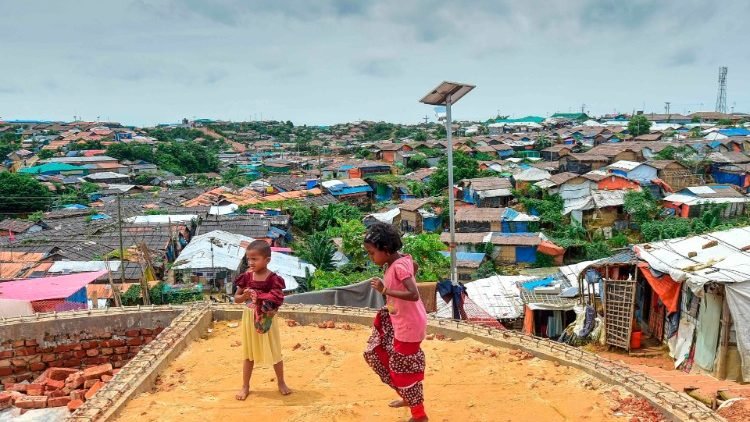As 300,000 children living in refugee camps in Bangladesh attended their first day of school on 23 July, Sheldon Yett, a UNICEF Representative in the country, stresses the importance of education to ensure “a safe and dignified return for these children in Myanmar.”
By Edoardo Giribaldi
On Sunday, 23 July, classrooms in Rohingya refugee camps in Bangladesh were filled with 300,000 children eager to start their first day of school.
Educational opportunities
According to UNICEF, “one million refugees, half of whom are children, live in densely populated camps in Bangladesh as of 2017, when they fled violence and persecution from neighboring Myanmar.”
Despite the issues due to displacement and natural disasters such as “fires that burned learning centers, and the fury of Cyclone Mocha,” refugee camps registered an expansion in educational opportunities directed to adolescents and girls.
A better future
“Rohingya children,” according to Sheldon Yett, UNICEF Representative in Bangladesh, “want to learn and turn their hopes and dreams for a better future into actual potential.”
Yett stressed the importance for children to “continue their education” during their permanence in Bangladesh to ensure “a safe and dignified return” in Myanmar.
That’s “the most important ingredient,” he affirmed.
Adolescents and young girls
The areas of interventions touched on several groups of young Rohingya. Parallel to new possibilities for older children, “a dedicated campaign brought more than 13,000 children who were not attending school into classrooms.”
A special effort was also specifically carried out to support adolescent girls in the pursuit of their education.
In fact, due to social norms, “parents are often reluctant to send girls to school when they have reached puberty.”
UNICEF and partners have collaborated “to demonstrate to parents the benefits of girls’ education, implement girls’ classes, and organize accompaniment to classes with female tutors.”
An immense task
The organization’s statement highlighted the “immense task” of providing education “in the world’s largest refugees settlements.” This was made possible through the presence of 3,400 learning centers and community-based learning facilities.
The press release concluded by underlining the introduction of the Myanmar curriculum for the first time during this academic year.
A formal course of studies that, since its inauguration in 2021, “has been gradually expanded with grades 3 through 5 and 10th grade opening today for the first time in Cox’s Bazar refugee camps.”
Such a development significantly increased “learning opportunities for both older and younger children.”



